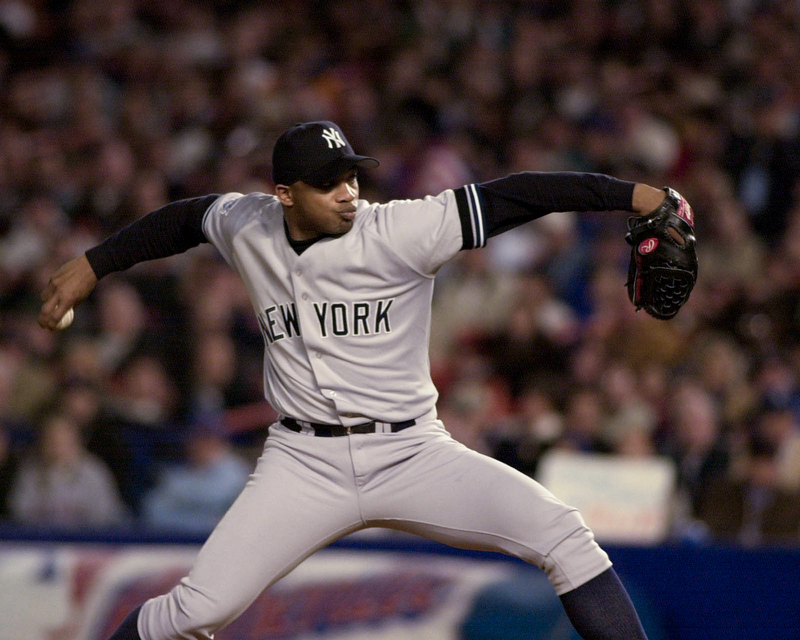Last updated on November 3rd, 2023 at 08:37 am
An Eephus pitch is a slow pitch ball from a pitcher to the batter. The idea behind the low-speed pitch is to catch a hitter off guard when at the plate. According to The Atlas, 2016 saw an average fastball speed in the MLB hover around 91 MPH, and an Eephus can be as slow as 50 MPH.
A Video Showing this Type of Pitch
Why is it Called an Eephus Pitch / Who Invented It?
Rip Sewell, a pitcher on the Pittsburgh Pirates, came up with the Eephus pitch in the ’40s. The name originates from the Hebrew word “efes,” which means nothing. Since the pitch is seen as a junk pitch since there is nothing special on it, the Hebrew phrase perfectly describes the nothing pitch.
Rip Sewell had a long career as a pitcher with over 300 Major League games using that pitch. He only gave up on homerun on the Eephus pitch to Ted Williams of the Boston Red Sox during the 1946 All-Star Game. Since it was an All-Star game match and it did not matter who won, Rip threw the ball twice to Williams to challenge in a friendly way.
Is the MLB Eephus Pitch Legal?
The Eephus pitch is legal in Major League Baseball to throw. As long as the pitcher does not deceive the batter by slowing down in their pitching rotation, there is no issue. Since there is no minimum speed that a pitcher needs to pitch, a pitcher can mix this pitch in their arsenal.
What is the Slowest MPH Pitch in MLB History?
The slowest pitch in baseball history belongs to Clayton Kershaw of the Los Angeles Dodgers. Clayton Kershaw threw a 46 MPH Eephus pitch back in 2016 against the Atlanta Braves. By the looks of Clayton’s delivery, he was not trying to throw an Eephus pitch, so that the ball may have left his hand a bit early.
The slowest official Eephus pitch in baseball belongs to Zack Greinke in 2021 for the Houston Astros. Zack Greinke threw a 51 mile per hour strike pitch against the Detroit Tigers. The slow pitch that Zack Greinke threw ended up in the middle of the strike zone, and the batter did not swing. Before Zack Grienke threw a 51 MPH pitch, Yu Darvish had the slowest pitch at 59 MPH.
According to James LeDoux, the average MPH Eephus pitch hovers around the mid-’60s.
Why is the Eephus Pitch Effective?
The Eephus pitch can be effective because it can throw off a hitters timing. For example, a hitter might see a 90 MPH fastball routinely from pitchers, so getting a pitch 30-40 MPH slower can throw them off completely. The timing can impact their next swing if they become unsure if they will see another slow pitch again.
Why is the Eephus Pitch Not Effective?
Not everyone who throws the Eephus pitch to a batter at home plate gets an out. In 2002, Orlando Hernandez of the New York Yankees was pitching against Alex Rodriguez of the Texas Rangers. Orlando Hernandez threw the Eephus pitch to Rodriquez, who crushed the ball for a home run.
How is the Eephus Pitch Different from a Changeup?
An Eephus pitch is much slower than a changeup pitch. According to James LeDoux, the average speed of a changeup is 83 MPH, while an Eephus is 64 MPH. That makes the Eephus pitch 23% slower than when a pitcher throws a changeup to a hitter.
An Eephus pitch should not be confused with a knuckleball. A knuckleball will see the ball dance in the air in a random form, while an Eephus pitcher acts like a lob. Since the knuckleballs can be similar in speed to an Eephus pitch, some people might confuse the two pitch types.
Conclusion
The Eephus pitch has been around the game of baseball for decades. From the early concept in the ’40s by Rip Sewell, pitchers continue to use this pitch today. While some players like Greinke can get away with this pitch, others like Orlando Hernandez are best known for the moonshot home run they gave up to Alex Rodriguez when they threw that pitch.
Similar Posts
What is a Blown Save in Baseball?
What is a Quality Start in Baseball?
What Does a Bench Coach in Baseball Do?
What Does Bush League Mean in Baseball?
Greg Kristan, owner of The Stadium Reviews, LLC and TM Blast, LLC, brings his extensive experience visiting over half of the MLB ballparks, along with numerous MLS, NHL, NBA, and NFL venues, to provide in-depth coverage on the bag policy, food options, and parking. He has also been interviewed about his experiences on several sports podcasts.


